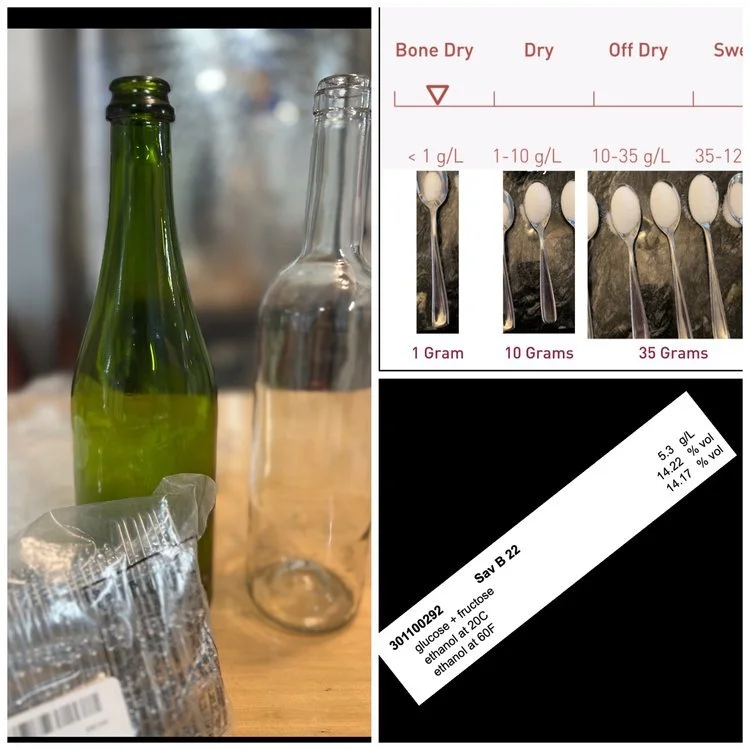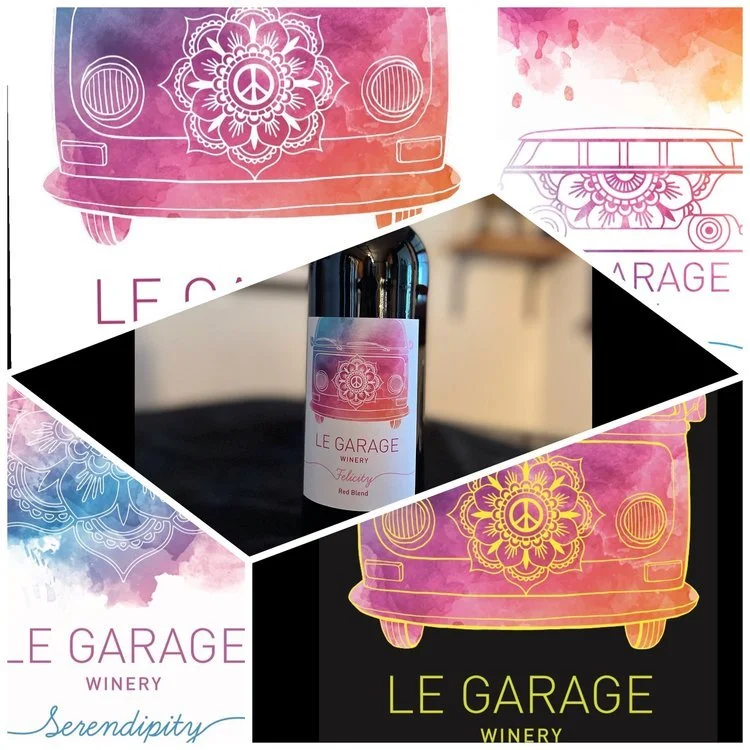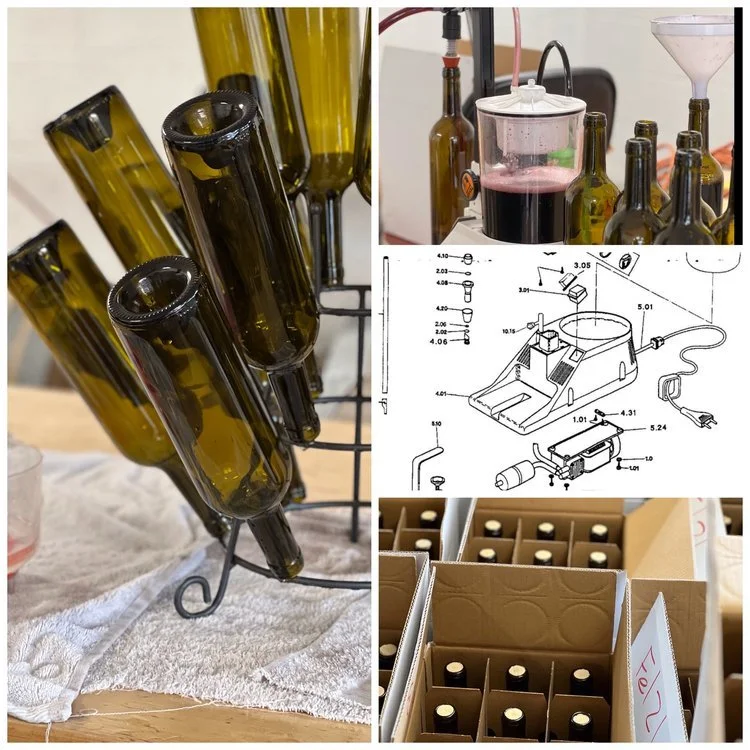The Trouble With Residual Sugar - Le Garage Newsletter 1.27.23
The decisions I made in December regarding sparkling wine have been upended by the lab results that just arrived. We are bottling on Saturday so I’ve had to scramble to compile information. The Rosé has 0.7 grams of sugar per liter of wine. Roughly that is about 1/10th of a teaspoon of sugar per bottle. This constitutes a “bone dry” wine. The alcohol by volume is 16%. In contrast, the Sauvignon Blanc has 5.3 grams of sugar per liter which is about 8/10th of a teaspoon of sugar per bottle. It has 14% alcohol by volume and this wine is considered “dry”.
The Rosé is perfect but the residual sugar in the Sauvignon Blanc is a concern. Anything over 1 gram of sugar has the potential of kicking off another fermentation in the bottle which will turn a still wine into a sparkling wine and leave sediment when it’s done. That secondary fermentation will also drive the alcohol by volume up. To avoid this situation many larger wineries will stabilize their wines using the following techniques.
Filtration will remove the left-over yeast cells among other things. I don’t have a filter because I like those “other things”.
Potassium Metabisulfite (Sulfites) is an antioxidant added to wine to protect it from oxygen which can cause bacteria, loss of flavor, and loss of color. Over time, especially when barrel aging or using real cork in bottles Sulfites will dissipate. Once the Sulfites dissipate, the wine will be unprotected. If stored properly, (in a cool, dark place inverted on a rack where the wine touches the cork) wines can last years. I use minimal Sulfites.
“Oxygen is the enemy of wine.”— Louis Pasteur
Potassium Sorbate is used to prevent yeast from further fermentation in wines with more than 1 gram of sugar per liter. It will not dissipate over time and will not allow a secondary fermentation in the bottle. It is Non GMO, Vegan and naturally occurring however synthetically reproduced. It is considered safe and is in many of the foods we purchase. I don’t know enough about it and the effects it would have on my wine, so this is not an option for me right now.
The 5.3 grams of sugar in the Sauvignon Blanc is just enough sugar to ferment again if there just happens to be a live yeast cell floating in the wine. This is quite likely, but still unpredictable. My choices are this:
1. Bottle it! It will be delicious now and it will be delicious in it’s effervescent form, after it ferments again. It will most likely only go to 16% alcohol by volume once fermentation is complete. It will have some sediment.
2. Add a little more sugar and some champagne yeast and let it become an off dry to semi sweet sparkling wine. This would be High, High, High in Alcohol due to the additional sugar.
3. Add some champagne yeast to it to ensure it sparkles and market it as a sparkling wine, the alcohol content will still be about 16%. For Champagne you would add about 8 grams of sugar to a bottle of dry white wine along with yeast. The 5.3 grams of residual sugar in the Sauvignon Blanc will be enough for a nice soft effervescence. The Champagne yeast will be added to ensure fermentation occurs.
My decision is to bottle most of it as is. My white wine drinkers are waiting! I will however set aside enough to make a few cases of sparkling wine by adding some champagne yeast. Once the sparkling wine experiment is complete, I will be sharing that wine under a different label.
Thank you for taking this ride with me! Please feel free to reply to this newsletter. I do read your emails and love your feedback!
Sharon




